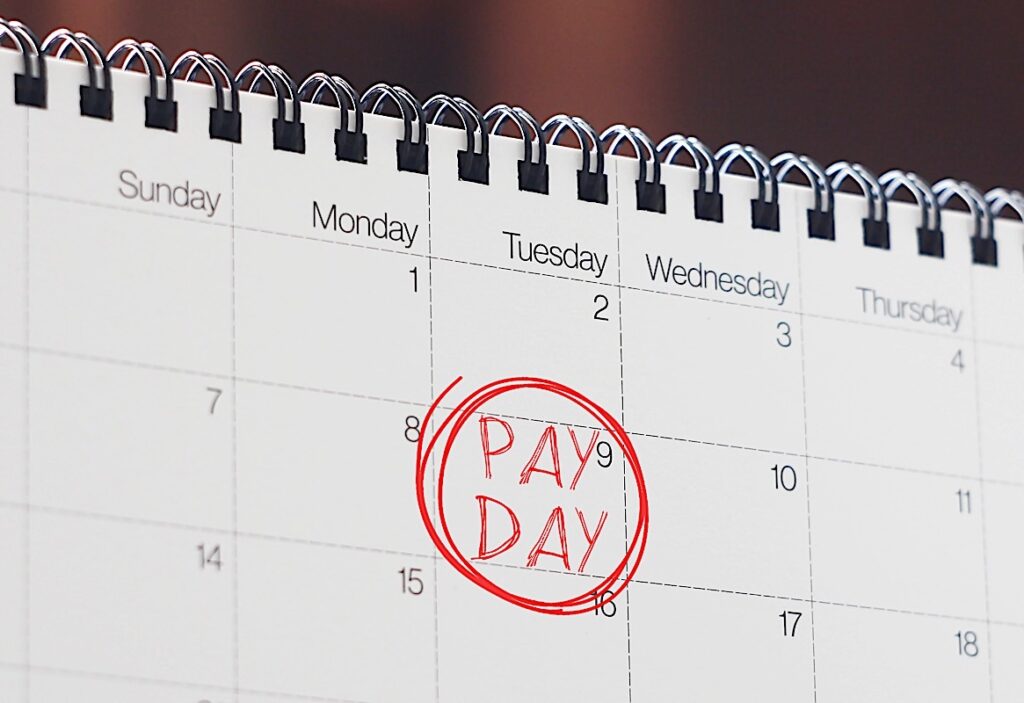
Payroll Managers’ Guide to Earned Wage Access (EWA): Flexible Payroll Solutions
Earned Wage Access (EWA) has recently emerged as a pivotal innovation in the landscape of employee benefits. Essentially, it allows workers to access a portion of their income as they earn it, rather than waiting for the traditional payday — with the focus on an easily accessible employee benefit rather than an emergency “payday loan.”
Quick Facts
- Earned Wage Access (EWA) allows employees to access a portion of their earned wages before the scheduled payday
- EWA is not considered a loan or salary advance and is strictly a benefit.
- EWA provides employees with access to money they have already earned
- EWA can improve employee financial wellness by reducing reliance on high-interest payday loans
- EWA can lead to increased employee satisfaction and retention
- EWA services are typically offered through third-party providers although they can be self-managed.
- In formally implement programs, EWA transactions are usually facilitated through mobile apps or online platforms
- EWA can help employees manage unexpected expenses without waiting for payday or resorting to high-interest payday loans.
EWA — a Timely Benefit that Improves Employee Satisfaction
This shift in payroll management reflects growing demand for flexibility and financial well-being among employees—needs that are increasingly becoming a priority for businesses to address.
But what sets EWA apart from other financial services like loans or salary advances? The answer lies in its structure and purpose. EWA isn’t about borrowing money; it’s about giving employees access to funds they have already earned. This distinction is crucial for several reasons:
- No Interest or Fees: Unlike loans, EWA does not involve interest payments or high fees, making it a more financially sound option for employees.
- Immediate Financial Relief: EWA provides access to earned wages during financial emergencies, reducing the need for high-interest credit borrowing.
- Better Financial Planning: By accessing funds when needed, employees can better manage their cash flow and budgeting.
- Improved Employee Morale: Flexible access to wages can significantly enhance employee satisfaction and retention.
EWA isn’t just about quicker access to earnings; it’s about empowering employees to manage their financial health more effectively.As a payroll manager, implementing EWA can also offer significant advantages for your organization. It can reduce financial stress among employees, which in turn can lead to increased productivity and reduced absenteeism. Moreover, offering modern, flexible payroll solutions can make your company more attractive to potential hires, helping you to attract and retain top talent.
Quick Statistics
- 70% of employees say they would prefer access to earned wages before payday
- 56% of employers report increased employee satisfaction after implementing EWA
- EWA programs can reduce employee turnover by up to 40%
- 60% of employees who use EWA report reduced financial stress
- 45% of companies offering EWA see improved recruitment outcomes
- EWA users are 50% less likely to take out payday loans
- 80% of employees using EWA report better financial management
- Companies with EWA programs see a 30% increase in employee productivity
- 65% of employees say EWA is an important benefit when choosing a job
The Mechanics of Earned Wage Access: A Step-by-Step Guide
Understanding how Earned Wage Access (EWA) works is vital for any payroll manager looking to implement it. The process is generally straightforward, but it’s important to get a firm grasp on each step.
- Employee Initiates Request: The process begins when an employee requests access to part of their earned wages. This is typically done through an app or online portal provided by the EWA service provider.
- Verification of Earned Wages: Once the request is made, the EWA platform verifies the employee’s earnings for the pay period. This involves calculating the accrued wages based on hours worked, sales completed, or other metrics specific to the job.
- Approval and Disbursement: After verification, the EWA provider approves the request and disburses the funds. The money is usually transferred to the employee’s bank account or made available via a prepaid debit card within minutes to hours.
- Payroll Reconciliation: On the scheduled payday, the amount accessed through EWA is reconciled. The employer deducts the disbursed amount from the employee’s total wages for that pay period before processing the payroll.
- Service Fees: Some EWA programs may charge a small fee for each transaction, while others may be subsidized by the employer. It’s essential to understand the fee structure to ensure clarity for both the employer and the employee.
By understanding these steps, you as a payroll manager can help streamline the setup process and ensure a smooth rollout of EWA services in your organization. This approach not only benefits employees by providing financial flexibility but can also enhance employee satisfaction and retention, leading to a more productive workforce.
Why Earned Wage Access Isn’t a Loan or Advance
One of the biggest misunderstandings about Earned Wage Access (EWA) is its classification. While it might seem similar to a payday advance or a loan at first glance, there are significant differences that separate EWA from these financial services. With EWA, you’re not borrowing money against future pay; you’re accessing already earned funds.
Consider this: if you’ve completed a week’s worth of work, those wages belong to you. Traditional payroll cycles impose a waiting period, typically bi-weekly or monthly, before you can access this money. EWA breaks away from this constraint by letting you access your earnings when you need them. This is accomplished without imposing interest rates or finance charges, further distinguishing it from credit products.
Moreover, regulatory frameworks also reflect this difference. According to the Federal Truth in Lending Act, proceeds provided under EWA are not classified as credit, and the providers are not considered creditors. This means EWA providers operate under different regulations than traditional lenders or payday loan companies.
State regulations reinforce this distinction. Many states do not classify EWA as a loan, thereby exempting EWA providers from consumer loan and payday loan licensing laws. Instead, these providers often need to comply with specific EWA service laws, ensuring transparency and consumer protection without the heavy hand of loan-related regulations.
So, why does this matter? For one, it means you’re not incurring debt or obligating yourself to future payments with interest. It’s about getting your money in your hands, where it belongs, without the strings attached. This also serves to improve financial wellness and reduce the need for high-interest borrowing options, which can lead to cycles of debt.


 Our HR solutions experts can recommend the right mix of HR outsourced services to make your entry into Canada easier.
Our HR solutions experts can recommend the right mix of HR outsourced services to make your entry into Canada easier.  Pivotal Employment Management Services co-hires your workforce, simplifying entry of your business in Canada.
Pivotal Employment Management Services co-hires your workforce, simplifying entry of your business in Canada. 
















